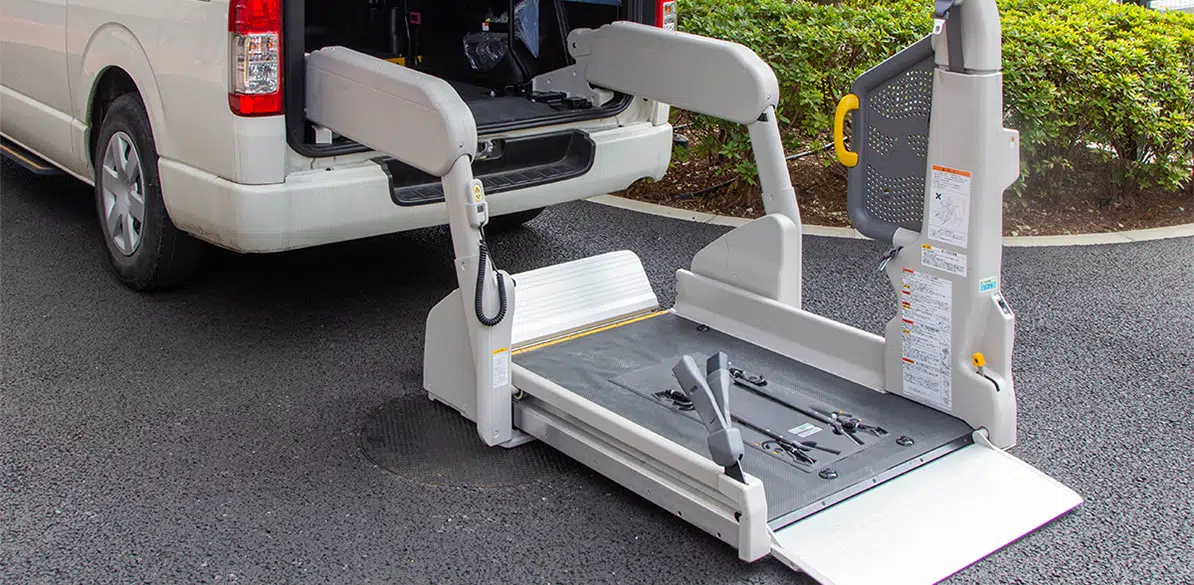This is what a car adapted for a child in a wheelchair looks like

If a child needs a wheelchair to get around, you should find a vehicle that adapts to his or her needs. As there are no factory-fitted cars for children in wheelchairs, with few exceptions, it is more common to find converted cars in which the rear space has been modified to accommodate a child in a wheelchair.
To achieve this, large MPVs or passenger vans are normally used. Some models are more suitable than others for workshops to make the appropriate modifications. A good spacing and regular shapes make adaptations easier and more satisfactory.
Standard vehicles have a passenger compartment floor that is too high to fit a ramp and climb up without much effort. Therefore, the vehicle’s interior has to be modified by creating, almost by hand, a specific hole where the wheelchair will go about 20 centimetres lower than the rest of the floor.
In order to do this one must remove the part of the floor where the hole will be and place a box that maintains the same strength and torsional properties. The stability of the vehicle must not be compromised. Therefore, such modifications must be carried out by experienced and properly approved personnel.
Once the box is ready, everything must be welded together and finished off so that the compartment is as airtight as it was when it left the factory. The tailgate or rear doors shall include the corresponding lower part of the bumper to provide access through a completely straight space.
Now that the car has a lowered floor, it is time to install a wheelchair lift. There are several ways to do so, as one can resort to the typical manual roll-out ramp, a heavier ramp with electric/hydraulic drive, a platform lift or a crane.
Whatever the system is, it must be the one that best suits your needs taking into account the capabilities of the person helping the child into and out of the vehicle, the type of wheelchair (normal or electric) or the weight that the access system has to support.
Once the wheelchair is in place, the ramp/crane/platform must be firmly retracted without posing a risk of movement while the vehicle is in motion, either to the child or to any of the occupants. But it is also necessary to install, either in the lowered floor or attached to the structure of the car, anchorages to secure the wheelchair and keep it in place over bumps and bends.
But why are wheelchair vehicle conversions so expensive?
In addition to being time-consuming, conversions can be costly due to all the legal processes involved. Any modification must be duly approved. In fact, if you do not get approval on all the modifications, your car will not pass the Technical Vehicle Inspection (ITV) and, consequently, you will not be able to drive it, nor insure it properly, nor transfer it in case you decide to sell it.
To have a conversion approved, you must pass the corresponding ITV inspection, providing a series of documentation that is required in order to be given the go-ahead. You will need a technical project and a certificate of completion issued by the workshop that has carried out the work, a report with the parts (brand, model and reference) used in the conversion, a conformity report with the approval of a laboratory authorised by the Ministry of Industry, a technical project approved by the college of engineers and photos of the vehicle.
All this means that modifications cannot be made by just anyone or in any way, they have to be properly made and approved. But there is more, because if the conversion made by the manufacturer has to be fitted directly in the car, in order to get approval for putting the vehicle on the market, crash or destruction tests may be required to check that it is safe.
This process makes the cost of selling each conversion unit skyrocket. In the end, you should add up not only the cost of manufacturing and installation but also the planning, development, construction and all the consequential costs of the approval process. However, any cost is less than the risk posed by the consequences of an accident.
